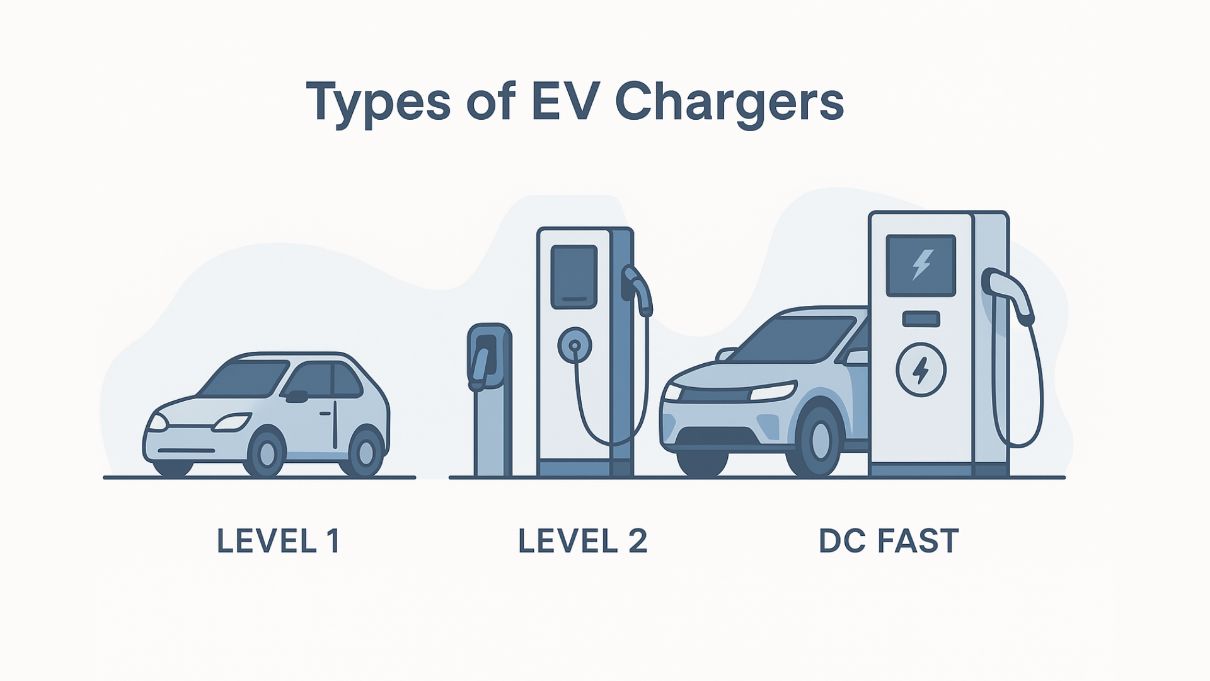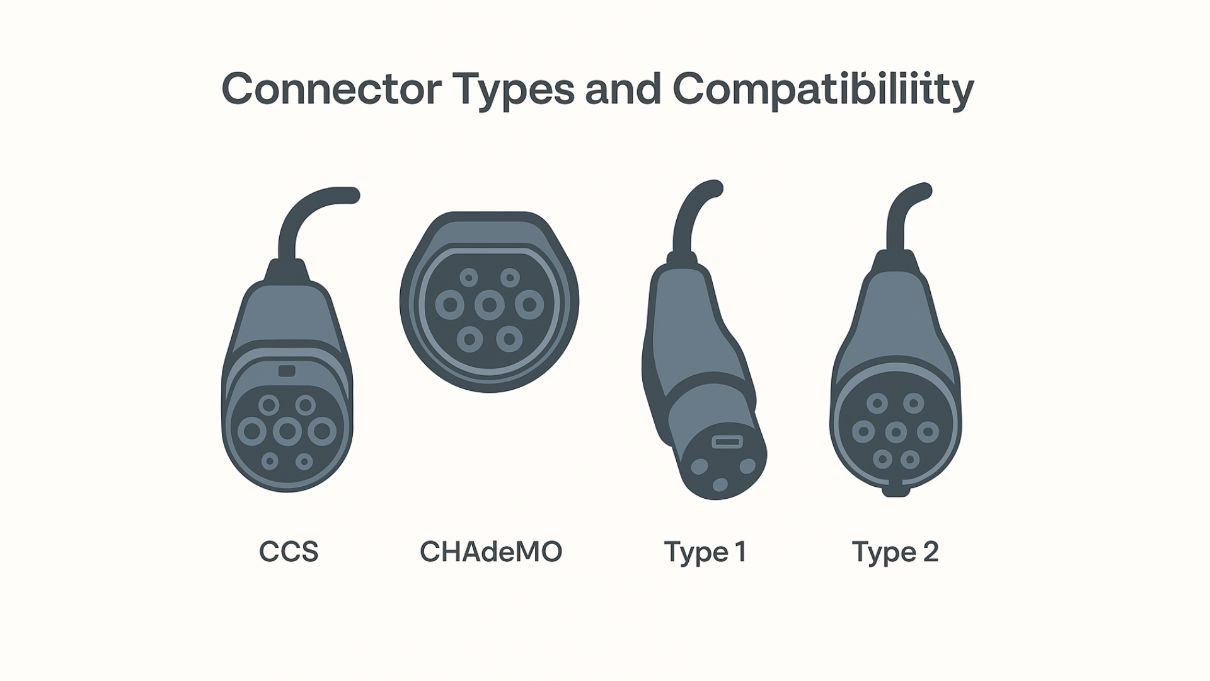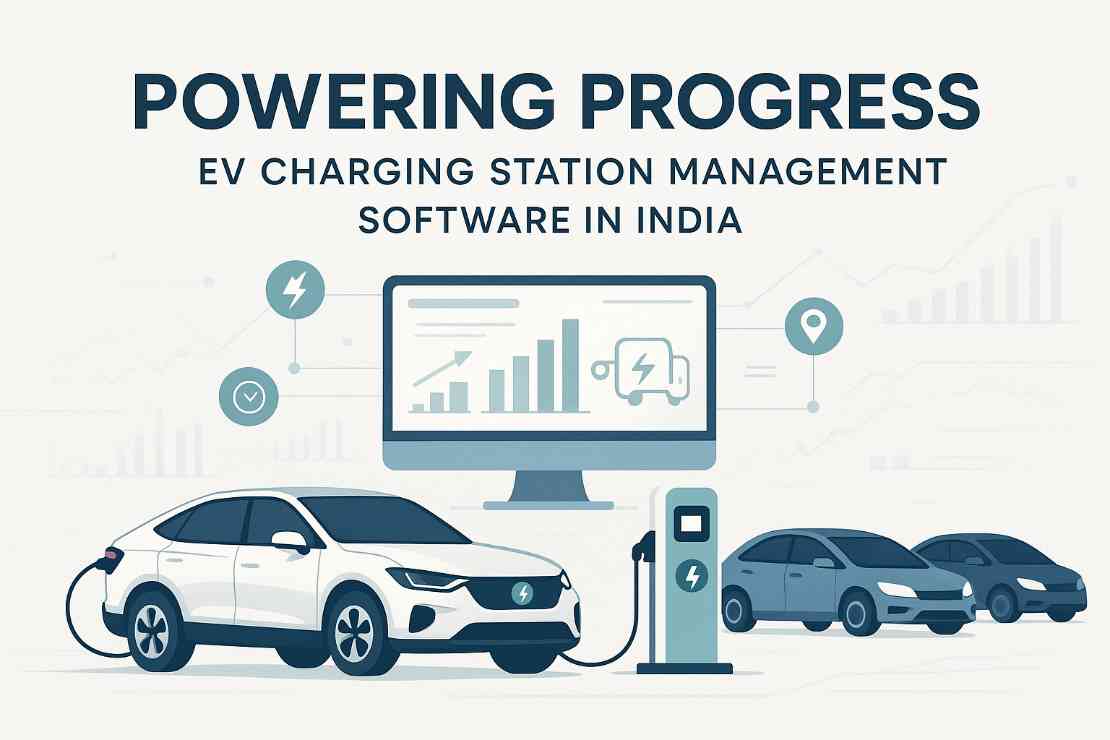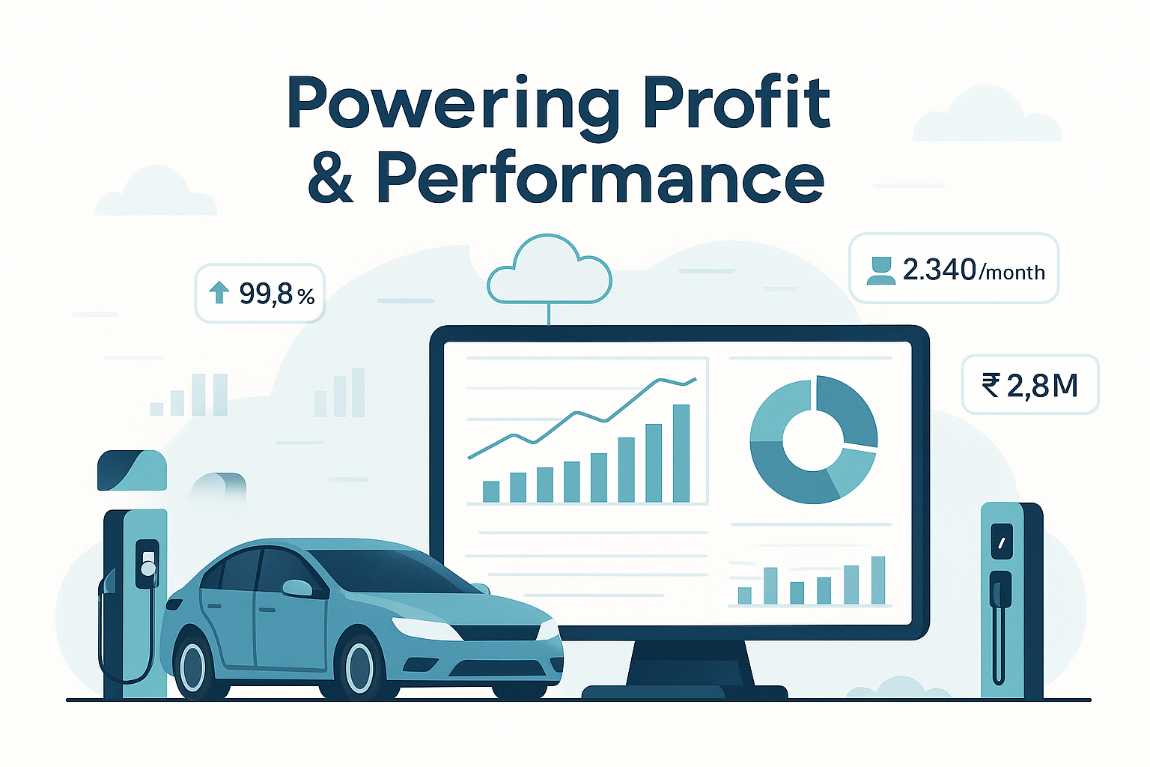As we accelerate towards a more electrified future, the role of EV chargers becomes increasingly crucial. Whether you're a Charge Point Operator (CPO) or managing an EV fleet, understanding the various types of EV chargers is essential for efficient operations and customer satisfaction. In this guide, you'll explore the different types of EV chargers, their benefits, and how they fit into the landscape of 2025.
Introduction
With the global push towards sustainability, the electric vehicle (EV) market is booming. By 2025, experts predict that EVs will comprise a significant portion of new vehicle sales worldwide. As a CPO or fleet operator, you are at the forefront of this transformation, ensuring that drivers have access to reliable and efficient charging solutions.
However, the rapidly evolving technology and diverse range of EV chargers can be overwhelming. From understanding connector types to navigating charging speeds, making informed decisions is crucial. Fortunately, by the end of this guide, you'll have a comprehensive understanding of which EV chargers are valid and optimal for your needs.
The Problem: Complexity in EV Charging
The EV charging ecosystem is complex, with numerous charger types, connector standards, and installation considerations. This complexity can pose challenges for CPOs and fleet operators who need to balance cost, convenience, and compatibility.
The Solution: Understanding Charger Types
By categorizing and understanding the various types of EV chargers, you can streamline your operations, enhance customer experience, and support the transition to a greener future. Let's delve into the specifics of each charger type and their applications.
Types of EV Chargers

Level 1 Chargers: The Basics
Level 1 chargers are the simplest and most accessible type of EV charger. They use a standard 120-volt outlet and provide charging speeds of about 2 to 5 miles of range per hour. While slow, they are cost-effective and ideal for overnight charging at home.
- Applications: Suitable for home use, especially for drivers with low daily mileage.
- Pros: Low cost, easy installation, uses existing electrical infrastructure.
- Cons: Slow charging speed, not ideal for fleet operations or public charging.
Level 2 Chargers: The Workhorse
Level 2 chargers operate at 240 volts and are the most commonly installed chargers for both residential and public use. They offer charging speeds of 10 to 60 miles of range per hour, making them suitable for a wide range of applications.
- Applications: Residential, workplace, and public charging stations.
- Pros: Faster charging, suitable for overnight and workday charging.
- Cons: Requires additional installation, higher cost than Level 1.
DC Fast Chargers: Speed and Convenience
DC Fast Chargers (DCFC) are the powerhouse of the EV charging world, providing rapid charging capabilities. These chargers operate on a 480-volt system and can deliver up to 80% charge in 20 to 30 minutes, depending on the vehicle.
- Applications: Highway rest stops, urban areas, and fleet depots.
- Pros: Fast charging, high throughput, reduces downtime for fleets.
- Cons: High installation and operational costs, requires significant electrical infrastructure.
Ultra-Fast Chargers: The Future
As technology advances, ultra-fast chargers are emerging, offering charging speeds that significantly reduce downtime. With capabilities exceeding 350 kW, these chargers are set to revolutionize the industry.
- Applications: Strategic locations for long-distance travel and high-traffic areas.
- Pros: Extremely fast charging, future-proofing your infrastructure.
- Cons: Very high cost, requires substantial grid connectivity and upgrades.
Connector Types and Compatibility

CCS (Combined Charging System)
CCS is becoming the dominant standard in Europe and North America due to its versatility and fast charging capabilities. It combines AC and DC charging in one connector, making it a preferred choice for new installations.
CHAdeMO
CHAdeMO is a popular DC fast charging standard, especially in Japan. While it's being phased out in favor of CCS in some markets, it's still widely used and supported by several automakers.
Type 1 and Type 2
Type 1 (J1772) is commonly used in North America for Level 1 and Level 2 charging, while Type 2 (Mennekes) is the standard in Europe. Both offer reliable connections for their respective regions.
Tesla Supercharger
Tesla’s proprietary connector is widely used in its Supercharger network. While primarily for Tesla vehicles, adapters are available for other EVs in some markets.
Installation Considerations
Electrical Infrastructure
Understanding your site's electrical capacity is vital. Upgrading infrastructure to support higher voltage chargers can be costly but necessary for future-proofing.
Safety Features
When installing chargers, prioritize safety features such as RCD (Residual Current Device), MCB (Miniature Circuit Breaker), and RCBO (Residual Current Breaker with Overcurrent Protection) to prevent electrical hazards.
Location and Accessibility
Choose locations that maximize accessibility and visibility. Consider factors like proximity to major roads, lighting, and security to enhance user experience.
Benefits for CPOs and Fleet Operators
Improved Customer Experience
Offering a variety of charging options enhances customer satisfaction and loyalty. Fast and reliable charging solutions can attract more users to your network.
Operational Efficiency
For fleet operators, having a mix of Level 2 and DC fast chargers can optimize vehicle turnaround times and reduce idle periods.
Revenue Opportunities
As the demand for EV charging grows, CPOs can capitalize on new revenue streams. Dynamic pricing models and subscription services can enhance profitability.
Future Trends in EV Charging
Smart Charging Solutions
In 2025, smart charging technologies will be more prevalent, allowing for load balancing, energy management, and integration with renewable sources.
Vehicle-to-Grid (V2G) Technology
V2G technology will enable EVs to discharge energy back to the grid, offering additional revenue streams and supporting grid stability.
Expansion of Charging Networks
Expect significant growth in charging infrastructure, with governments and private entities investing heavily in expanding networks to meet demand.
Practical Insights and Actionable Advice
Enhancing Operational Efficiency through Data Analytics
One of the most transformative aspects of modern fleet management is the integration of data analytics. With the rise of the Internet of Things (IoT) and advanced telematics, fleets generate an enormous amount of data that, when properly analyzed, can significantly enhance operational efficiency. By leveraging data analytics, you can gain deep insights into vehicle performance, driver behavior, and overall fleet operations.
Predictive Maintenance
Predictive maintenance is a game-changer for fleet operators, allowing you to anticipate potential vehicle failures before they occur. By analyzing data from vehicle sensors and telematics systems, you can predict when a component is likely to fail and schedule maintenance proactively. This approach not only reduces the risk of breakdowns but also decreases downtime, thereby maintaining fleet availability and improving service reliability.
For instance, a logistics company that implemented predictive maintenance reported a 30% reduction in unscheduled maintenance events. The company utilized data from engine diagnostics, oil quality sensors, and tire pressure monitors to identify maintenance needs before they became critical, ensuring their fleet remained operational and efficient.
Optimizing Route Planning
Data analytics also plays a crucial role in optimizing route planning. By analyzing historical traffic data, weather conditions, and delivery schedules, you can develop optimal routes that minimize travel time and fuel consumption. Advanced algorithms can provide real-time route adjustments based on current traffic conditions, further enhancing efficiency.
For example, a delivery service company reduced its fuel consumption by 15% after employing a data-driven route optimization solution. The system analyzed traffic patterns and delivery windows, ensuring that drivers avoided congested areas and adhered to the most efficient routes. This not only saved fuel costs but also improved delivery times, boosting customer satisfaction.
Driver Behavior and Safety
Monitoring and improving driver behavior is another area where data analytics can have a significant impact. By analyzing data from GPS systems, accelerometers, and onboard cameras, you can identify risky driving behaviors such as speeding, harsh braking, and rapid acceleration. Addressing these behaviors through targeted training and incentive programs can lead to safer driving practices and reduced accident rates.
A transportation company, for example, implemented a driver behavior monitoring program and observed a 20% reduction in accidents within the first year. By providing feedback and training to drivers, the company not only improved safety but also reduced insurance premiums, illustrating the tangible benefits of integrating data analytics into fleet management.
Sustainability and Environmental Impact
As sustainability becomes a more pressing concern, fleet operators are increasingly looking to reduce their environmental footprint. Data analytics can aid in this endeavor by providing insights into fuel consumption and emissions. By identifying inefficiencies and adopting eco-friendly driving practices, fleets can reduce their carbon footprint and contribute to environmental sustainability.
Some fleet operators have gone a step further by incorporating electric vehicles (EVs) into their fleets. Data analytics can help optimize the deployment and operation of EVs by analyzing charging patterns, range limitations, and energy consumption. A delivery company that integrated EVs into its fleet, guided by data-driven insights, achieved a 50% reduction in greenhouse gas emissions, setting a benchmark for sustainable operations.
Utilizing AI and Machine Learning
The application of AI and machine learning (ML) in fleet management is another exciting development, offering you powerful tools for decision-making and operational improvement. AI and ML can process vast amounts of data and uncover patterns that are not immediately apparent, leading to more informed strategic decisions.
AI in Fleet Management Software
Fleet management software enhanced with AI capabilities can automate routine tasks such as scheduling, dispatching, and reporting. By learning from historical data, AI systems can predict demand fluctuations and adjust operations accordingly, ensuring optimal resource allocation.
One notable example is a rental car company that used AI-driven software to optimize its fleet allocation across multiple locations. By predicting customer demand, the company was able to reduce the number of idle vehicles by 25%, thereby maximizing asset utilization and increasing profitability.
Machine Learning for Cost Reduction
Machine learning algorithms can also be used to analyze cost structures and identify areas for cost reduction. By evaluating factors such as fuel prices, maintenance costs, and labor expenses, ML models can provide actionable insights into cost-saving opportunities.
A construction company, for instance, applied machine learning to its fleet operations and identified a 10% opportunity for cost savings by optimizing fuel purchases and maintenance schedules. The insights provided by the ML model allowed the company to renegotiate supplier contracts and streamline its maintenance processes, leading to significant cost reductions.
The Role of Blockchain in Fleet Management
Blockchain technology, while still emerging, holds promise for enhancing transparency and security in fleet management. By providing a decentralized and immutable ledger, blockchain can improve the traceability of transactions and ensure data integrity.
Applications in Supply Chain Transparency
For fleet operators involved in logistics and supply chain management, blockchain can offer unprecedented transparency. By recording every transaction or movement on the blockchain, companies can ensure the authenticity and accuracy of their supply chain data. This can be particularly valuable in industries where compliance and traceability are critical, such as pharmaceuticals or food distribution.
Conclusion
Navigating the world of EV chargers can be complex, but with the right knowledge, you can make informed decisions that benefit your operations. As a CPO or fleet operator, embracing diverse charger types, prioritizing safety and efficiency, and staying abreast of industry trends will position you for success in the electrified future.
FAQ Section
What is the most common EV charger type in 2025?
Level 2 chargers remain the most common due to their balance of speed and cost-effectiveness, suitable for both residential and public installations.
How do I choose the right connector type for my charging station?
Consider your target audience and location. CCS is widely adopted in Europe and North America, while CHAdeMO remains popular in Japan. Tesla's Supercharger network is proprietary but expanding in compatibility.
What safety features are essential for EV charger installations?
Ensure installations include RCDs, MCBs, or RCBOs to protect against electrical faults and overcurrent, enhancing safety for users.
Are ultra-fast chargers worth the investment?
For high-traffic areas and strategic locations, ultra-fast chargers can significantly reduce charging times and attract more users, justifying the investment.
How can I future-proof my charging infrastructure?
Invest in scalable solutions, support multiple connector types, and integrate smart charging technologies to adapt to evolving industry needs.
Can EV chargers support renewable energy integration?
Yes, many modern chargers support integration with renewable sources, allowing for cleaner energy use and grid support through V2G technology.
By understanding and implementing these insights, you can effectively navigate the evolving landscape of EV charging and position your business for success in 2025 and beyond.


.jpeg)





